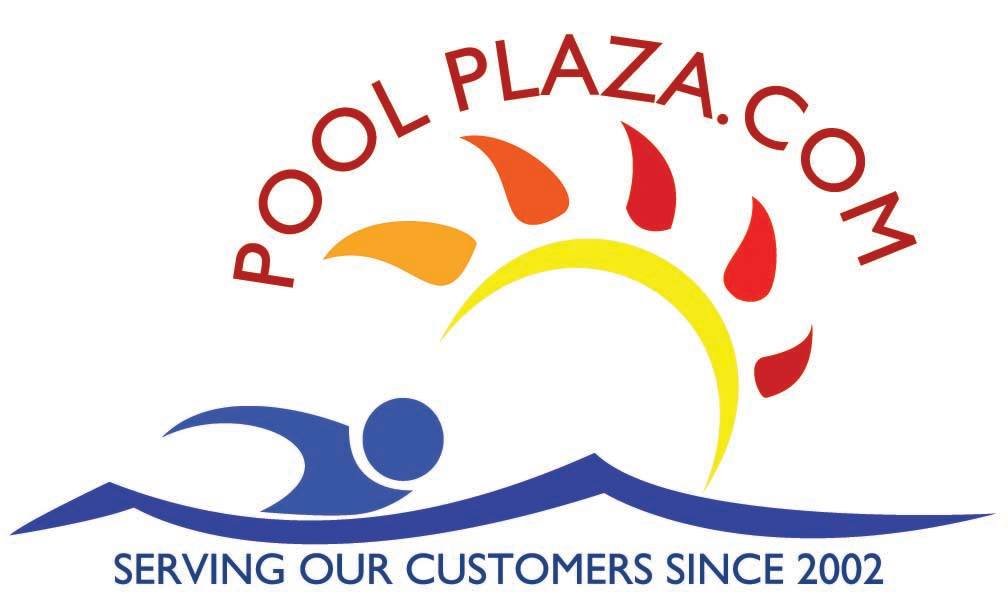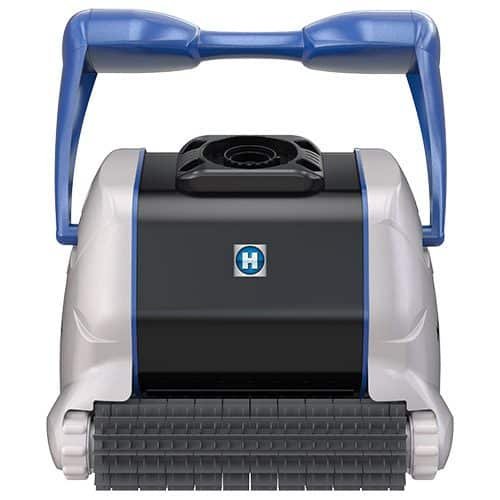Chlorine Adjustments
As we mentioned in the introduction, it is extremely important to maintain a consistent level of chlorine in the pool. If the
chlorine level is allowed to drop to zero, the pool will develop algae and swimmers will be at risk of infection. The purpose of the chlorine is to burn up (oxidize)
the algae and kill germs and bacteria.
Important Terms to Remember:
Chlorine Residual – the level of chlorine in the pool water, ready to fight germs and kill algae. This
can be measured using a good chlorine test kit or test strips.
Chlorine Demand – the amount of chlorine that is needed to burn up all the contaminants in the water.
A heavily used pool will have a high chlorine demand and will use a lot of chlorine. A lightly used pool will have a low chlorine demand. Properly
estimating chlorine demand is very important because if you do not, your pool will either run way to high or way too low on chlorine.
|
Factors that increase chlorine demand
|
Factors that reduce chlorine demand
|
|
Heavy usage
|
Low usage
|
|
Sunny weather
|
Lack of sunlight
|
|
Hot water
|
Cold water
|
|
Low stabilizer level
|
High stabilizer level
|
Shocking (Superchlorination) – adding enough chlorine to raise the level temporarily to 10 ppm or higher.
This is done to raise the level quickly if it gets too low. It is also done to treat algae problems. Note that simply “turning up” the chlorinator
will never be enough if the chlorine level is below 1.0 ppm. The pool will need to be shocked.
To maintain proper chlorine levels, there are three steps:
Maintain a constant chlorine feed
It is important that chlorine is constantly fed into the pool at the proper rates to make up for
the chlorine that is being used up. This is best done through a chlorinator.
Tablet Feeders are a very common way to feed chlorine into the pool. A floating
chlorinator is the least expensive. An inline chlorinator is still fairly inexpensive and keeps the chemicals away from swimmers. We discourage the use of a
floating chlorinator in the pool.
Properly controlling a tablet feeder – There are two ways to determine how much chlorine
is fed into the pool.
1. The number of tablets in the feeder controls HOW MUCH can be fed.
 As a As a
general rule, only put as much in the feeder as will be needed over the next few days. If you fill a chlorinator all the way up, you run the risk of
over-chlorination. It is better to put only as much as you are going to need over the next 3-7 days, depending on how soon the pool will be serviced again.
This way you have some control over the maximum feed.
For instance, a spa might only use less than a pound of chlorine per week, but the chlorinator
will hold 6-8 lbs of chlorine. If you were to fill it up, you would create a dangerous situation in the spa with very high chlorine levels and very low pH levels.
Water chemistry is something that requires careful thought. A lazy minded person will
not do well at water chemistry.
2. The valve setting controls HOW FAST it will be fed.
Inline chlorinators have a valve that controls the flow of water through the chlorinator.
The faster the water flows through the chlorinator, the faster the chlorine is dissolved.
The problem with most erosion type feeders is that you have no idea of how much water is
flowing through each chlorinator, so you really have to carefully observe the setting that produces optimal results for each chlorinator.
Properly controlling a salt water chlorinator – There are three things that are important
when using salt water chlorination:
1. Keep the proper level of salt and stabilizer in the pool
 Most salt water Most salt water
chlorinators require a 2500 – 3000 parts per million salt concentration in the water. This can barely be tasted in the water, but provides enough salt for the salt
cell to produce the chlorine needed to maintain the pool.
If the salt level drops too low, the system will not be able to produce chlorine. Most
systems have some sort of indicator to show low salt levels in the pool. The answer to low salt levels is to add rock salt to the skimmer and let it dissolve into
the water.
It is also important to have a good stabilizer level (30 – 50 ppm) in the pool or the sunlight
will burn up the chlorine and the saltwater system will not be able to keep up with the demand.
2. Adjust the control knob on the salt system
The salt system has a knob that controls the amount of chlorine that is generated. This
can be adjusted to keep the production of chlorine in line with the demand.
3. Keep a close eye on the stabilizer and salt levels in the pool
These levels must be carefully maintained. If the salt level is too low, then the unit
will not produce chlorine. If the stabilizer level is too low, the chlorine will not stay in the water long and the unit will not be able to keep up with demand.
Shocking a Pool (Superchlorination)
If the chlorine reading gets too low then it is important to superchlorinate the pool in order to quickly raise up the chlorine
level to avoid unsanitary water. Simply turning up the chlorinator will NOT be sufficient to remedy a zero chlorine level. It is important to shock the pool
AND refill the chlorinator when the chlorine reads zero.
If algae develops, it is a good idea to temporarily raise the chlorine level to 10 ppm and brush the entire pool down to expose the
algae.
After a heavy rain, if a lot of rainwater and other contaminants have washed into the pool, it is a good idea to shock the pool.
These contaminants tend to use up the chlorine and you need to superchlorinate the pool to meet the extra demand.
|
Pool Size
|
Normal Shock
|
Heavy Shock
|
Super Shock
|
|
|
If the pool has low chlorine use a 10 ppm shock to bring the level back up.
|
If the pool is green or algae is present, use a 20 ppm shock to burn up the algae
|
If the pool is deep green or heavily algae infested, a 30 ppm shock may be needed.
|
|
15,000 gallons
|
1.5 lbs
|
3.0 lbs
|
4.5 lbs
|
|
20,000 Gallons
|
2.0 lbs
|
4.0 lbs
|
6.0 lbs
|
|
25,000 Gallons
|
2.5 lbs
|
5.0 lbs
|
7.5 lbs
|
|
30,000 Gallons
|
3.0 lbs
|
6.0 lbs
|
9.0 lbs
|
|
35,000 Gallons
|
3.5 lbs
|
7.0 lbs
|
10.5 lbs
|
|
50,000 Gallons
|
4.0 lbs
|
10.0 lbs
|
15.0 lbs
|
Superchlorination is done by adding the proper amount of chlorine to a bucket of water and pouring the slurried mixture into the
pool.
|
MATERIALS FOR SUPERCHLORINATION:
Superchlorination (shocking) is typically done with a granular type of chlorine. In many applications, calcium hypochlorite is fine
for this purpose. It is also very affordable.
In some applications (particularly black plaster or vinyl lined pools), it is preferable to use a fast dissolving shock such as Litho-Shock
to shock the pool. This is because it is not good to have the residue setting on the pool surface, if the pool is vinyl lined or if it has dark colored plaster.
On darker colored plaster, calcium hypochlorite can lead to scaling on the surface of the pool.

|


































 As a
As a Most salt water
Most salt water